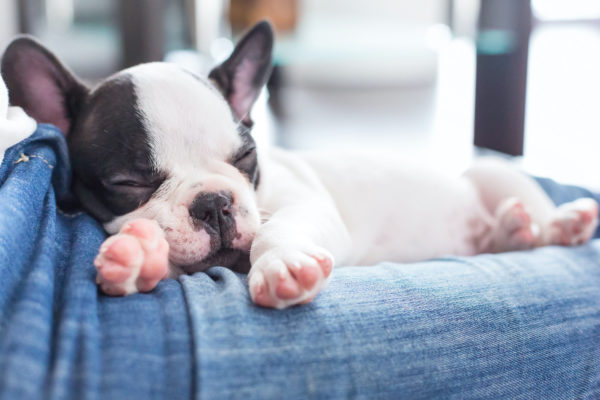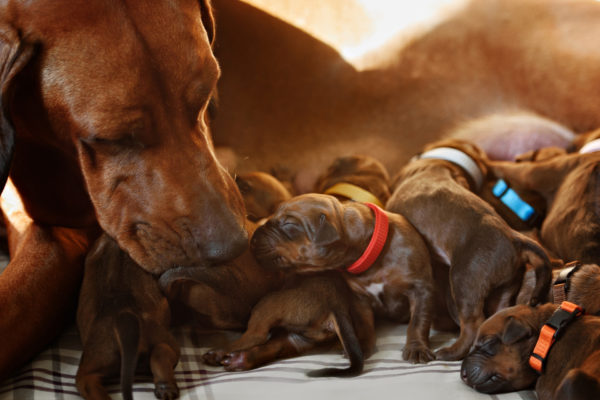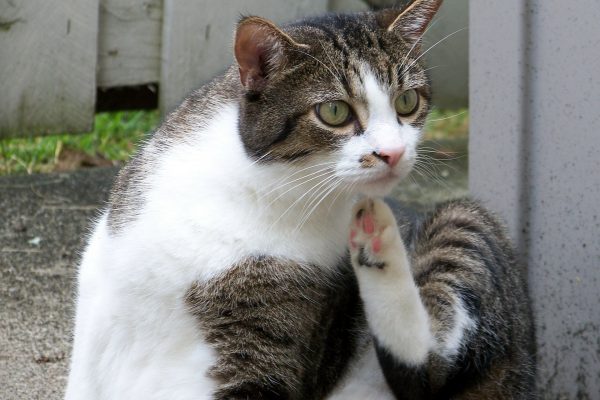SUCCESSFUL PUPPY SOCIALIZATION DURING COVID-19
So, you’ve adopted a puppy and you’ve been told how important it is to socialize them. But now everyone’s on lockdown because of the pandemic. Help! How do you socialize your pup? Globalvet is here to help. Here are some tips on how to socialize your new furry friend from the comfort of your home.
THE IMPORTANCE OF SOCIALIZATION
There are a number of different stages your dog goes through during their development. If your puppy is between eight and sixteen weeks old, they’re the perfect age to be socialized. This is called the socialization period because it’s when your puppy acquires their social skills. That’s why it’s important to introduce them to as many new things as possible (other animals, children, noises, etc.) and create positive associations with them. They’ll remember these positive experiences for the rest of their lives! Unfortunately, that also means that the opposite is true, and traumatic experiences will stick with them as well. Your pup will keep on learning after this period, of course, but it’s a lot easier at this stage.
BASIC RULES FOR PROPER SOCIALIZATION
- Try to expose your puppy to as many positive experiences as possible while they’re eight to sixteen weeks old. But remember—quality is a lot more important than quantity! That means it’s better for your pet to have fewer experiences that are all positive.
Quantity: You introduce Fido to a bunch of dogs at the same time at the park, which makes supervision difficult and unfortunately, your pup has some negative encounters.
Quality: Your puppy meets a dog and everything goes well. The next day, he meet another dog and has another positive experience. At the end of the socialization period, your pup might not have met as many dogs, but all of their experiences were positive. - Spread out the new experiences over multiple days and weeks. Introduce your puppy to one or two new things a day.
- Let them see, smell, and hear the new thing and then give them some treats or a toy to associate the new thing with something pleasant.
- Make sure your puppy is comfortable throughout the encounter.
– Their body is relaxed and their tail is up
– They’re curious and approach the new object on their own
– They eat the treats you offer them
– They’re happy and playful - During these exercises, always start with a low intensity level and gradually ramp it up if your pet is comfortable. For example, if you’re introducing your puppy to a noise, start at a low volume and turn it up a little at a time. When introducing your puppy to new people, start farther apart and gradually move closer.
- If your puppy seems scared, back away from the new thing and reassure your pup. Once they’re comfortable again, reintroduce them to the new thing but with less intensity.
INTRODUCING YOUR PUPPY TO NEW THINGS DURING LOCKDOWN
People
Your new furry friend would normally be meeting all kinds of people right now— babies, kids, teenagers, adults, seniors, people in different outfits like cycling gear or a firefighter’s uniform, people who use wheelchairs or canes, people of all different heights and appearances, you name it! But that’s a lot harder during the pandemic. Here are some tips for getting your dog used to people in other ways:
- Have them listen to the sounds of babies laughing and crying and the sounds of young kids playing. YouTube is perfect for this!
- Disguise yourself with a hat, sunglasses, cane, big coat, bike helmet, or whatever else you have lying around. Change your posture, walk strangely, alter the sound of your voice. If you have kids, you can make it a fun game!
- When you go for walks, keep your distance from others but whenever you pass by other people, take a moment to give your dog a treat. You’re helping to socialize your pup just by letting them see and hear other people on your walks.
- During lockdown, you can also sit with your pup and video call some friends and family. Let your puppy hear the voices of the people you’re talking to. You can even get them to look at the screen. You’ll be surprised at how curious and attentive your puppy is!
Dogs and other animals (cats, rodents, birds, horses, etc.)
- Let your dog hear different animal sounds
- When you see other animals on walks, create positive associations for your dog while keeping your distance. If your dog pulls on their leash to get to the animal, get their attention with a treat they love. Using these moments to get your puppy to focus on you will come in very handy in the long run on your walks!
Cars
- Put blankets and cushions in your car to make it comfortable for your dog.
- Start with short drives.
- Gradually increase the length of the drives.
For more tips on how to take a safe and comfortable drive with your dog, read our blog post.
Different environments
Essential travel restrictions currently limit the number of places you can take your dog. Some places are closed and others have limited their hours or capacities, including parks, forests, downtown areas, alleys, beaches, and bike paths. We would normally encourage you to visit all these places with your puppy. Here are some things to can do to recreate some of these environments:
- Take your dog into the backyard (or inside if you have the space) and hop on your bike or skateboard or strap on your rollerblades. Don’t forget to start farther away and approach slowly if your dog is comfortable.
- Put different textures down on the ground and get your pup to walk over them (bubble wrap, cushions, cardboard, wood boards, foam mats, etc.). Make sure to let them do it at their own pace! Get your dog to walk over the various floor surfaces in your home (ceramic tile, hardwood, carpet, concrete, the bottom of the tub, stairs, etc.).
- Have them walk over different surfaces you encounter outside as well, such as grass, snow, dirt, sand, stones, sidewalks, asphalt, and so on.
- Place different objects on the ground and get your pup to walk around them (cones, boxes, bags, etc.).
Sounds
- Expose your puppy to different objects that make noise in your home, like your hairdryer and the vacuum.
- When out on walks you can help them get used to ambient outdoor noises like sirens, church bells, and car noises.
- Try to expose them to different sounds they will hear throughout their lives, such as thunder, fireworks, airplanes, and crowds. You can find compilations online to help with this. Here is one example and another one.
Objects
- Put your dog’s collar, harness, or vest on with the leash attached and have them wear it for gradually longer periods of time.
- Expose your dog to objects in your home (umbrellas, strollers, etc.) and tools you need to groom them (clippers, brushes, etc.) by placing the items on the ground and encouraging them to investigate.
- Turn on appliances like your vacuum for a few seconds at a time and start a reasonable distance away.
Remember to give your puppy treats whenever you expose them to these new things, whether it’s sounds, objects, or people, so they create a positive association in their mind.
EVEN MORE THINGS YOU CAN DO
The tips below are not directly related to socialization, but they’re some good things to start teaching your puppy at an early age when they’re capable of absorbing a lot of new information. It’s worth putting in the effort—it will save you a lot of hassle down the road!
Learning to be alone
We’re all stuck inside right now, but eventually you’ll return to work and your dog will have to spend some time alone. Now is a great time to gradually get them used to being comfortable in their crate. Make sure your dog spends a few minutes alone in their crate where they can’t see you and when you’re not in the house.
How do you make sure these sessions are positive experiences for your pup? How do you handle leaving the house, being away, and coming back? Click here for more tips.
Getting used to being touched
It’s never too early to start thinking about your dog’s hygiene and tasks you will have to carry out such as clipping their nails and brushing their teeth. Before all of that, your dog needs to being comfortable being touched. As soon as you can, start getting your dog used to being handled. You’ll find all the information you need about how to do this in our blog.
THE THEORY BEHIND OUR RECOMMENDATIONS¹
Brain development
- The brain is made up of millions of neurons. A developing brain makes connections between these neurons based on environmental stimuli. In other words, the more elements are present in an environment, the more connections your puppy’s brain will make!
- How these connections are organized is not set in stone — it’s what’s called plasticity. Certain sensitive periods when brain plasticity is high are particularly important times to establish connections between neurons. Your pup can learn a lot during these periods!
- Any number of circuits can be created, but they need to be reinforced and stabilized with environmental stimuli, because only stimulated synapses (part of a neuron) will remain in the brain. In other words, puppies that have repeated positive exposures will store those experiences and the emotions associated with them for their entire lives. For example, if a puppy is exposed to a cat a number of times and has a pleasant experience each time, they will store that information in their brain and learn that cats are safe and familiar.
Nature vs. nurture
- Each species has genes that give them a specific anatomy, physiology, and repertoire of expected behaviours. However, the environment animals grow up in and the experiences they have during their development are unique to each animal and help to further determine their behaviour.
- Although it’s hard to determine what influences certain behaviours, we know that an animal’s behaviour is the result of a combination of genetics and their environment.
¹CLOUTIER, Danielle. Comportement du chien et du chat, Observer comprendre modifier



